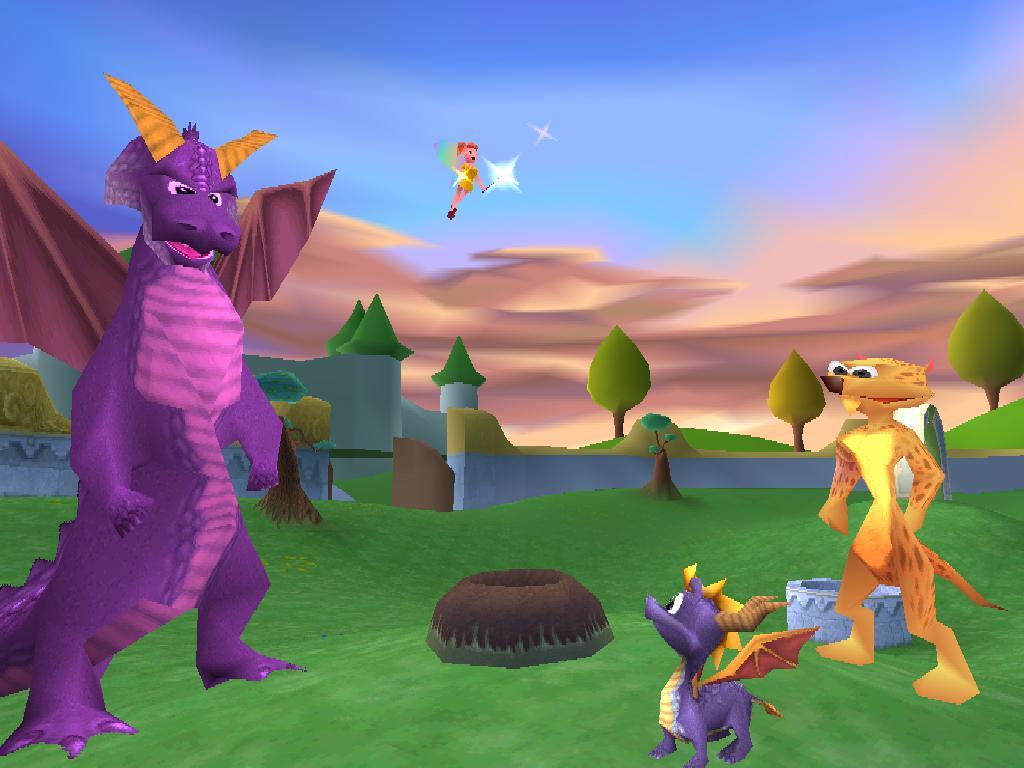I’ve thought about it. Despite the unswerving opinion shared by our tutors, video games – electronic games in general – can most certainly be narratives. Hypertext narratives.
I’ll use less ambiguous examples than Tetris this time. I remember playing PlayStation back in the day. Yes, PS1. The first one. That chunky grey box with the Walkman-like design where the retro-futuristic lid pops up in slow-motion and makes you feel like you’re boarding some sort of space shuttle. Yeah. That’s the one.
I didn’t exactly have the largest range of games. I liked the ones with the cartoon animals in them. I was a kid, leave me alone. Spyro. Crash Bandicoot. These were the ones I played.
Now, each of these games had a story to them. Both were driven by narrative. The player – and characters they were controlling – were concerned with achieving narrative goals. Narrative progression. I am not saying that narratives are formulaically goal-driven. But this does seem to be a fundamental element in traditional narrative structure, does it not? Of course, there is so much more potential in storytelling than this structure, as I said in my other post on the lecture (the one where I complain a lot about being hungry and tired).
There is some sort of order to games. They are structured. They are not random. One key difference between, say, a literary narrative and a gaming narrative is that the user in a gaming narrative is often unlikely to reach all of the possibilities of the game – all of the narrative possibilities existing in the game. A user experiences one version of a novel. All of the narrative possibilities are exhausted in one go. But in a game, the user is involved in the narrative, bringing another variable into play. This gives the narrative a degree of unpredictability.
As I write, my brother is playing the most recent version of Grand Theft Auto. People who have played this game will be aware that user control ceases at times and the game presents a short clip – usually the protagonist dealing with some ally, receiving instructions for another task. This works to redirect the user onto the game’s predetermined path. Some people follow this path. Even when they do, their narrative courses vary. If you are a 12-year-old me, however, you will happily spend your time on GTA stealing cars and motorbikes and scooters and driving around like a maniac, blasting some tunes. The user can develop their own tasks (e.g. find a motorbike to steal) and ignore the game’s actual tasks. So, narrative courses vary for each user.
First-person shooter games also have this redirection of narrative. Their hypertextuality is evident – players can communicate during the game through its network, music is played at times, there are screens within screens (I’m not sure this last one counts as hypertextual actually… but it is important to consider).
So, the narrative in a game is a push-pull process. The creators have a preferred narrative route for the user, but the user is the agent in narrative progression. They are, in essence, the protagonist. They can sometimes refuse to take the creators’ proposed route. They can fall short of tasks. They can pause the game. They can decide to quit the game. The narrative possibilities are not endless, but they are very, very plentiful. I can’t help but see contemporary gaming as interactive movies. I don’t know, I think we’re getting very very close to the next step in cinema without even realising it. (Providing we have not already arrived there… which we may have!)


